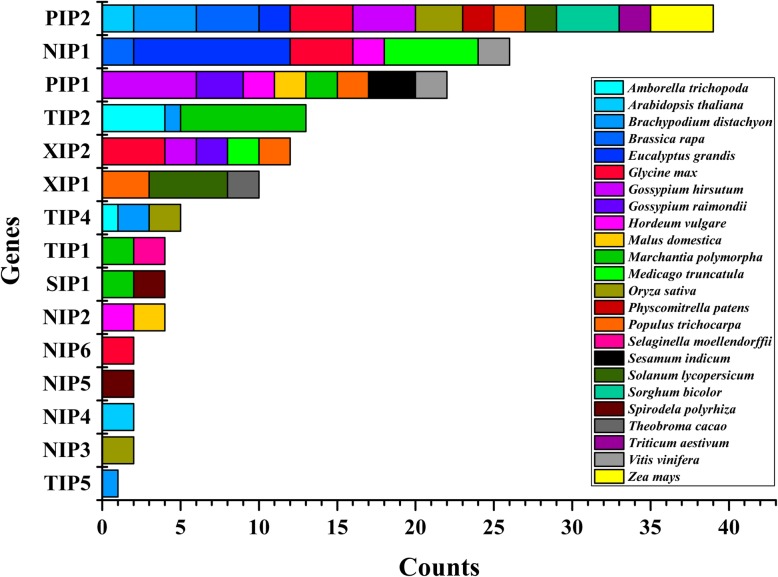Fig. 4.
The amount of predicted AQP tandem repeat genes in different species. To reveal AQP tandem repeat events, the whole genome data files of 24 well-studied species were downloaded from the Phytozome database. 148 candidate AQP tandem repeat genes were selected by the criteria that genes separated by five or fewer genes within 100 Kb regions, and the similarity > 70% between two genes. Different colored squares indicated different species on the right. PIP1 and PIP2 represented PIP1a-f and PIP2a-d, respectively; NIP1-NIP6 represented NIP1a-j, NIP2a-b, NIP3a-b, NIP4a-b, NIP5a-b and NIP6a-b, respectively; TIP1, TIP2, TIP4 and TIP5 represented TIP1a-b, TIP2a-h, TIP4a-b and TIP5, respectively; SIP1 represented SIP1a-b; XIP1 and XIP2 represented XIP1a-e and XIP2a-d, respectively

